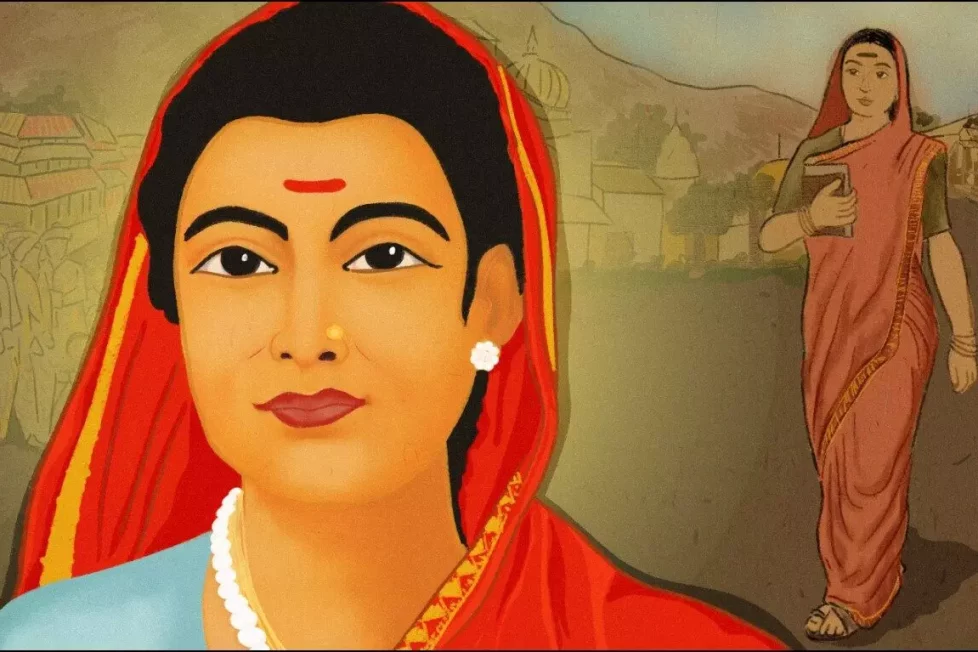Savitribhai Phule: A real feminist


Savitribai Phule was a trailblazer who opposed repressive social standards in her fight for women’s rights, equality, and justice. She is officially recognized as India’s first female teacher. One of the many poems Phule penned to provide a rallying cry to the oppressed to pursue education and free themselves from the bonds of the caste system is the one above, titled “Go, Get Education.”
Savitribai, a Mali Dalit woman, was born on January 3, 1831, in the Naigaon village of Maharashtra. She was married off at the tender age of ten, and it is reported that her husband, Jyotirao Phule, taught her at home. Later, Jyotirao allowed Savitribai to enroll in a Pune school for teachers. The pair helped each other throughout their lives, breaking down numerous societal barriers in the process.
In 1848, the pair opened a school for females in Bhidewada, Pune, during a period when it was thought improper for women to even pursue an education. This became the first girls’ school in the nation.
There was resentment among Indian nationalists like Bal Gangadhar Tilak when the Phule’s created more similar schools for girls in Pune, serving the Shudras and Ati-Shudras (the backward castes and Dalits, respectively). They argued against the establishment of schools for females and non-Brahmins, citing a “loss of nationality,” and held that breaking caste rules would result in the loss of one’s own identity.
The couple faced such severe criticism that Jyotirao’s father Govindrao ultimately had to push them out of his home.
The upper castes were quite hostile toward Savitribai, and there were even cases of physical assault.
When she was in charge of the first school in Bhide Wada, upper-caste males frequently threw dirt, cow dung, and stones at her. Savitribai allegedly had to transport two saris to and from school. When she got to the school, she would change out of the soiled sari, which would get dirty again on the way back.
However, the effort continued regardless, and the schools were eventually acclaimed as successes. One article from The Poona Observer in 1852 reads, “The number of girl students in Jotirao’s school is ten times more than the number of boys studying in the government schools. This is because the system for teaching girls is far superior to what is available for boys in government schools… If the Government Education Board does not do something about this soon, seeing these women outshine the men will make us hang our heads in shame.”
The Balhatya Pratibandhak Griha, also known as the “Home for the Prevention of Infanticide,” was established by Savitribai and Jyotirao for pregnant widows who were subjected to prejudice. This was motivated by a turn of events in the Andaman Islands when a young Brahmin widow was given a life sentence for the murder of her unborn child. The uneducated widow committed infanticide as a result of the rapist’s refusal to accept any responsibility for the child.
Among other social issues, Savitribai Phule supported inter-caste marriages, widow remarriage, the abolition of child marriage, sati, and dowry systems. The Phule’s also raised Yashwantrao, a widow’s child who was adopted, to be a doctor.
The Phules founded the Satyashodhak Samaj (‘Truth-seekers’ association’) in 1873 with the express purpose of promoting social fairness. This forum is available to everyone, regardless of caste, religion, or class hierarchy. In addition, they began “Satyashodhak Marriage,” which rejects Brahmanical ceremonies and requires the couple to get married to promise to advance equality and education.
Additionally, the pair established “Balyata Pratibandak Gruha,” a daycare facility for the safety of expectant widows and rape victims. Savitribai encouraged women to sit together at her gatherings in an effort to help them overcome caste restrictions.
On November 28, 1890, Savitribai again violated convention and carried the titve during the funeral procession for her husband (earthen pot). Savitribai, who was leading the procession, was the one to throw his body into the flames, a practise that is still primarily performed by men.
DISCLAIMER: The author is solely responsible for the views expressed in this article. The author carries the responsibility for citing and/or licensing of images utilized within the text.
